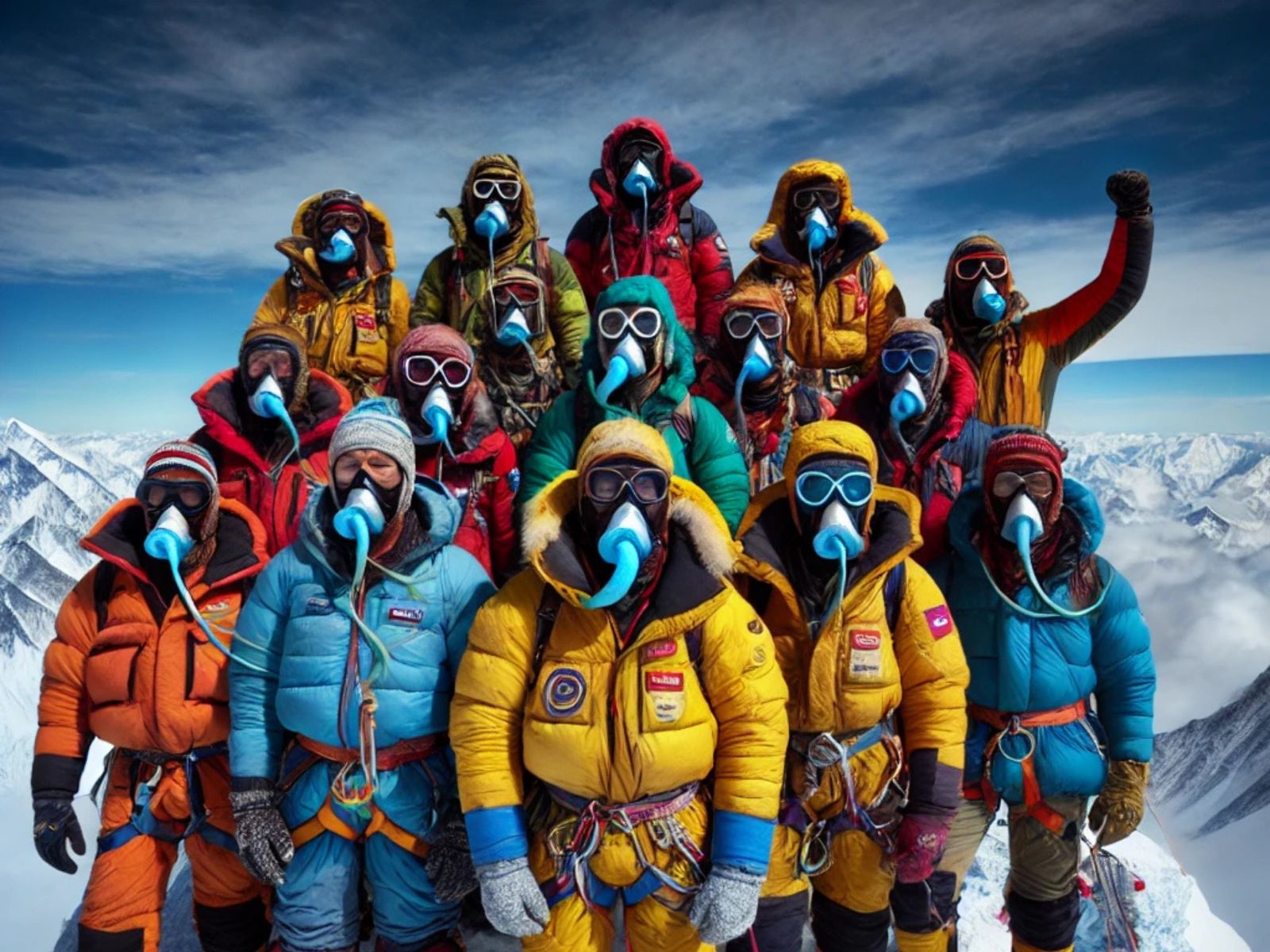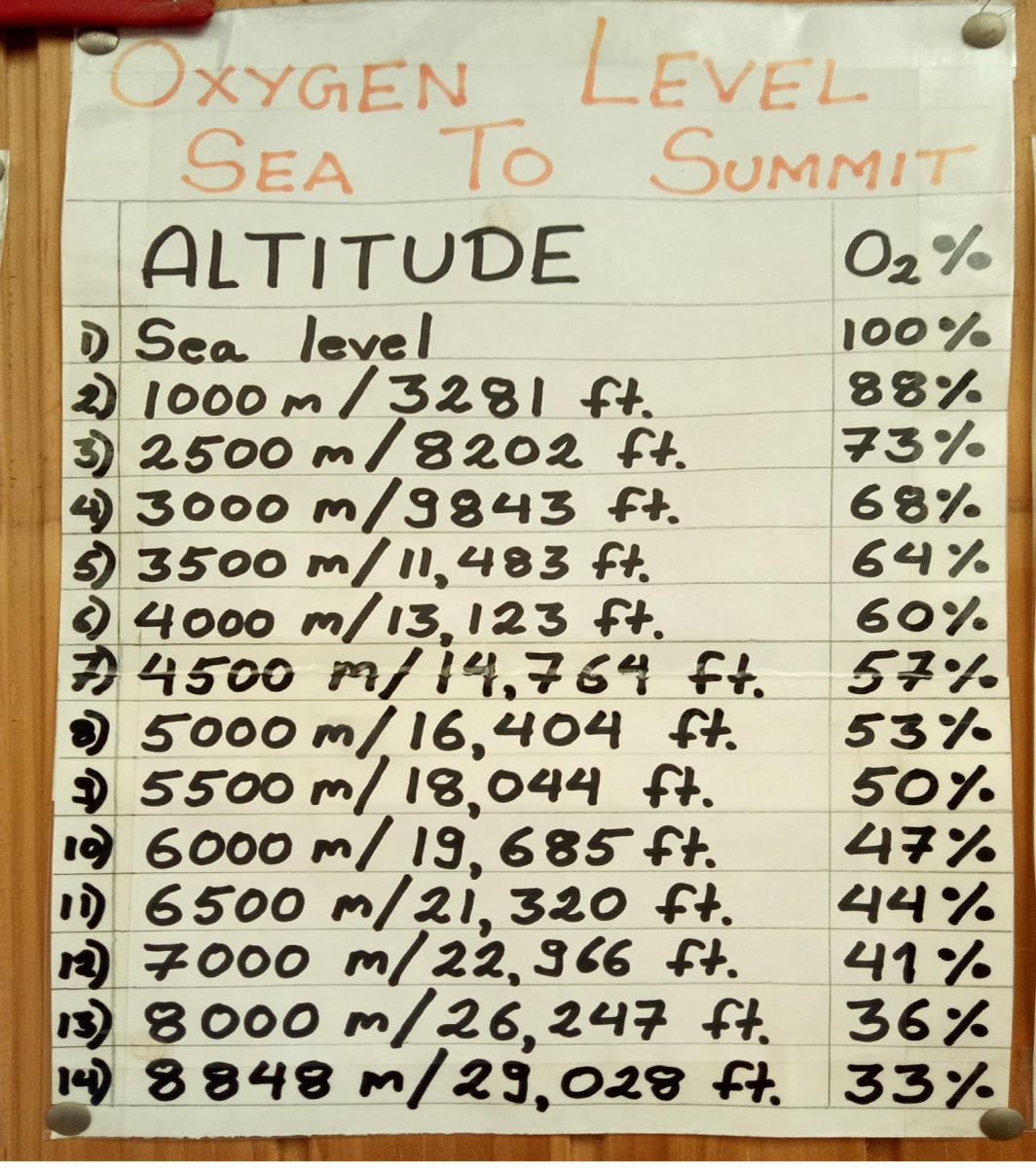The Death Zone refers to altitudes above 8,000 meters (26,247 feet) where the human body can no longer acclimatize effectively due to the extreme lack of oxygen. This term is commonly used in high-altitude mountaineering, especially on peaks like Mount Everest, K2, and Annapurna. This is most famously experienced on Mount Everest's Death Zone, where extreme cold, lack of oxygen, and exhaustion claim many lives.
High-altitude mountaineering is a test of human endurance, willpower, and survival. But beyond a certain point, even the most experienced climbers enter a realm where survival becomes a gamble. This deadly region, known as the "Death Zone," exists at altitudes above 8,000 meters (26,247 feet), where the human body begins to deteriorate rapidly due to extreme environmental conditions. But what makes the Death Zone so dangerous, and why do climbers still venture into it? This article explores the science, history, and challenges of the Death Zone, offering an in-depth look at one of the most extreme places on Earth.
The term "Death Zone" was first coined by Swiss doctor Edouard Wyss-Dunant in 1952 to describe altitudes above 8,000 meters. At these heights, the air pressure is only about a third of what it is at sea level, leading to dangerously low oxygen levels. Most of the world’s highest peaks, including Mount Everest (8,848.86m), K2 (8,611m), and Annapurna (8,091m), have summits well within this perilous region. Without supplemental oxygen, humans can survive in the Death Zone for only a short time before severe altitude sickness sets in.
The Death Zone height starts at 8,000 meters, and it is a region where humans cannot survive without supplementary oxygen. One of the most chilling Death Zone facts is that the human body begins to deteriorate rapidly in this environment, leading to confusion, hallucinations, and even death.
Oxygen is crucial for human survival, but in the Death Zone, oxygen levels drop to about 30% of those at sea level. This lack of oxygen causes hypoxia, a condition where the body and brain are deprived of adequate oxygen, leading to confusion, impaired decision-making, and even death. The effects of oxygen deprivation in the Death Zone include:

Several mountains around the world have notoriously treacherous Death Zones, claiming the lives of even the most seasoned mountaineers. Some of the deadliest include:
Mount Everest, the highest peak on Earth, stands at an awe-inspiring 8,849 meters (29,032 feet) above sea level. Beyond its majestic beauty lies a perilous region known as the Death Zone, which begins at 8,000 meters and extends to the summit. In this harsh environment, oxygen levels are one-third of what they are at sea level, making survival incredibly challenging. The body begins to deteriorate in the Death Zone due to the lack of oxygen, causing extreme fatigue, confusion, and even hallucinations. Temperatures can plunge to -50°C (-58°F), and the risk of severe altitude sickness, including HAPE (High Altitude Pulmonary Edema) and HACE (High Altitude Cerebral Edema), is high. Climbers who push through this deadly region often rely on supplementary oxygen and must endure extreme conditions with limited time, as staying too long can be fatal. The Everest Death Zone claims the lives of many adventurers, and their frozen bodies remain as eerie markers along the mountain’s dangerous slopes. Mount Everest's Death Zone is notorious for its freezing temperatures, unpredictable weather, and lack of oxygen. The Mount Everest Death Zone temperature can plummet to as low as -50°C (-58°F), making survival nearly impossible without proper gear.

History is filled with both miraculous survival stories and heartbreaking tragedies in the Death Zone. Many climbers who perish in the Everest Death Zone remain there forever, as retrieving their bodies is extremely difficult. The presence of Mount Everest Death Zone bodies, frozen in time, serves as a grim reminder of the mountain's deadly nature.
Despite the dangers, Everest continues to attract climbers willing to risk their lives in the Mount Everest Death Zone.
Few climbers dare to attempt summiting 8,000-meter peaks without supplemental oxygen, but some legendary mountaineers have accomplished this feat. Reinhold Messner and Peter Habeler made history in 1978 by becoming the first climbers to summit Everest without oxygen. Their success proved that it was possible, but only for those with extraordinary acclimatization and endurance.
Sherpas, the indigenous people of Nepal’s high-altitude regions, have an incredible ability to function in the Death Zone. Studies suggest that Sherpas have unique genetic adaptations that allow them to utilize oxygen more efficiently than most people. Without their expertise and resilience, many climbers would not survive the Death Zone.
One of the most controversial aspects of climbing in the Death Zone is the ethical dilemma surrounding rescues. With every step requiring immense effort, saving a struggling climber often means risking one's own life. Many climbers have been forced to make heart-wrenching decisions, choosing between their survival and helping others. The case of David Sharp is one of the most debated incidents, raising questions about the moral responsibilities of climbers in the Death Zone.
With advancements in gear, weather forecasting, and altitude training, high-altitude climbing is becoming slightly safer. However, the growing commercialization of Everest and other 8,000-meter peaks has led to overcrowding, increasing risks in the Death Zone. Some potential solutions include:
The Death Zone remains one of the most inhospitable environments on Earth, a place where human life is unsustainable. Despite the extreme risks, thousands of climbers still attempt to conquer the world’s highest peaks every year. Whether driven by personal ambition, adventure, or the allure of the unknown, those who enter the Death Zone must understand that nature always has the final say.
For those who dare to challenge it, the Death Zone is both the ultimate test and the ultimate gamble. And for the rest of us, it serves as a reminder of human resilience, the limits of survival, and the unforgiving power of the mountains.
The Mount Everest Death Zone facts remind us that while reaching the summit is a great achievement, it comes with life-threatening risks.
With Mount Everest Death Zone temperature reaching extreme lows and oxygen levels dropping, only the most prepared climbers stand a chance of survival.
The Death Zone refers to altitudes above 8,000 meters (26,247 feet) where oxygen levels are too low for the human body to survive for extended periods, leading to severe physical and mental deterioration.
In the
How Long Can You Stay in the Death Zone on Everest? People are advised not to stay in the death zone for more than 16 to 20 hours. 48 hours is considered the absolute threshhold for most people. This is with supplementary oxygen.
© Copyright Gateway Adventure Treks and Expedition Pvt. Ltd., 2025 All Rights Reserved